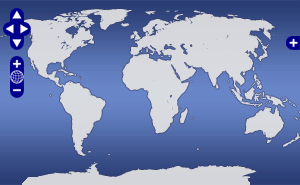Gridded seismically-derived thicknesses of Plio-Pleistocene sediments and depths to the top of the Miocene S-reflection in the Red Sea
The top of the Miocene evaporites throughout most of the Red Sea is marked by a prominent reflection in seismic data, called the "S-reflector" in the literature. The topography of this reflection can potentially reveal how the Miocene evaporites have moved since they were deposited. The thicknesses of the Plio-Pleistocene sediments above the evaporites may also reveal how subsided areas of the Miocene evaporites have been filled with sediment, as well as effects of sediment transport within the basin and sediment supply. The S-reflector is imaged in seismic data, including in early single-channel seismic data from the 1960s. This data set presents grids of seismically-derived thicknesses of Plio-Pleistocene sediments and depths to the top of the Miocene S-reflection in the Red Sea. Six grids are provided here. All are in GMT COARDS-compliant netCDF format and are in geographic coordinates. Four of these grids cover a large area and have file names starting with "redsea_Depth_S_reflection" or with "redsea_PlioPleistoceneThickness". The remaining two grids are derived from 3-D multi-channel seismic data and have names beginning "3DSeismicPP" where PP stands for Plio-Pleistocene. The four large-area grids were produced as follows. The seismic two-way times to the seabed and S-reflection were digitised from data of varying quality from 17 research cruises and from one commercial 3-D seismic survey. The quality of the seismic data varied, including line-drawing interpretations, paper records, and modern digital records. Two-way times were converted to depths below sea-level using 1538 m/s and 1900 m/s for the water column and Plio-Pleistocene sediments, respectively. Navigational accuracy reflects the positional technology in use during the surveys and varied from transit satellites in the 1960s to 1970s to GPS from the late 1980s onwards (details are available in the headers of the track line data for these earlier cruises from ncei.noaa.gov). Nevertheless, the accuracy even for the earliest cruises was considered adequate due to the coarse nature of the mapping done in this study. Each cruise file of the results (S-reflection depth and Plio-Pleistocene thickness) was first binned within cells of 0.01° X 0.01° to ensure relatively uniform along-track data density. Those cruise files were subsequently combined and binned again with a cell size of 0.1° X 0.1°. Grids were then generated using the GMT program "surface" with a tension factor of 0.35. In the "interpolated" grids, grid nodes that were more than 0.15° geographical degrees (~16 km) from measurements (of S-reflection depth or sediment thickness) were masked out (i.e., set to NaN). The "not_interpolated" grids were similarly constructed, though with grid nodes more than 0.015° (~1.6 km) from measurements masked out. Hence, these are like the interpolated grids but give a better sense of where the measurements were made, at the expense of being less useful for visualising variations. Finally, any areas of data overlapping with geomorphology that in multibeam sonar data was interpreted as volcanic (e.g., cones, ridges) were masked out (set to NaN). Further details are given in the associated references. The remaining two grids derived from 3-D seismic data give more detail of S-reflection depth and thickness of the Plio-Pleistocene sediments. These two grids were derived from commercial 3-D multi-channel seismic reflection data originally collected for BG in 1999. There is little information on the original processing of the commercial seismic data, although it extended to time migration. The 3-D volume comprises 4879 crosslines (SW-NE) spaced 12.5 m apart and 1729 in-lines (SE-NW) spaced 25 m apart. The seismic data have good quality above the Miocene evaporites and the S-reflection is clear throughout the volume. The seabed and S-reflections were mapped out using the geological interpretation software IHS Kingdom. For consistency with the large-scale grids, the same velocities of 1538 m/s and 1900 m/s for water column and sediments have been used to compute S-reflection depths and Plio-Pleistocene sediment thicknesses. More details are given in the associated references.
Mitchell, Neil
Investigator
University of Manchester
Ligi, Marco
Investigator
ISMAR
Device Info
Seismic:
Device Info
Seismic:
Platform
NotApplicable
Data DOI
Quality
2
The data have been processed/modified to a level beyond that of basic quality control (e.g. final processed sonar data, photo-mosaics).
License
Data Files
References
Data Citation Information
ISO/XML Metadata
Expand

 Map View
Map View

